If you have jumped straight here, pause.
To make sense of this section, it really helps to first understand two things:
- Understanding Risk Before Performance – why different CGMs are tested differently and why some need higher Time in Range (TIR) targets (often 5–10% higher) to reflect true glucose exposure.
- Assessing CGM Accuracy Performance – how calibration, comparators (capillary vs venous), and study design affect “accuracy”.
Or, if you prefer listening:
🎧 The CGM 3-Part Podcast Series
Key reminder before we get into features:
Different CGM systems are not all measuring glucose in the same way. Some are aligned closer to capillary glucose, some nearer to venous, and some sit below venous. That means:
- The same “70% TIR” can mean very different real glucose exposure across CGMs.
- Apparent “accuracy” metrics are shaped by what the sensor is aligned to.
- Your choice of features (alarms, calibration, AID integration) needs to sit on top of that reality, not ignore it.
If you are comfortable with that calibration story, then we are ready to choose between the bells and whistles.
Choosing a CGM system can feel like picking the right smartphone; some features matter more than others, and the best choice depends on your needs. Having worked with over 1,000 people starting CGM and around 250 using Automated Insulin Delivery (AID) systems, here is a breakdown of the most important factors to consider:
- Factory calibration vs manual calibration (and choosing a blood glucose meter that aligns with your CGM system)
- Optional calibration
- Alerts and alarms
- AI-powered systems
- Sensor wear duration
- Followers / remote monitoring
- Hardware (receiver vs phone)
- Integration with Automated Insulin Delivery (AID) systems
- Age restrictions
Calibration: factory vs manual
Calibration is like setting the time on a watch. Some watches adjust automatically (factory calibration), others need you to set them (manual calibration).
Factory calibration (automatic adjustment)
All leading CGM systems are factory-calibrated, meaning they work straight out of the box without needing routine finger-prick calibrations.
The Accu-Chek SmartGuide is the exception: it requires a calibration at around 12 hours. After that, no further calibrations are needed.
Is this a big drawback?
Not ideal, but in my view, not a deal-breaker either.
Why?
As long as an accurate blood glucose meter is used to calibrate, and best calibration practices (below) are followed, there should not be any real issues. The much bigger problem is bad calibration done badly.
Optional calibration: blessing or burden?
Some CGMs allow manual calibration. Whether that is a gift or a curse depends on your technique and your personality.
Your CGM measures glucose in interstitial fluid (just under the skin), while a finger-prick test measures glucose in capillary blood. Because glucose has to move from blood into the interstitial space, there is always a time lag. When glucose is changing quickly, the two readings will differ.
Optional calibration lets you manually enter a finger-prick reading to nudge the CGM back towards blood glucose. This can be useful when you see a big gap between the sensor and a reliable finger-prick result.
In practice, this is only likely to be needed 1–5 times per month, and only if:
- You actually finger-prick sometimes.
- You use a meter aligned with your CGM’s calibration (e.g. capillary-aligned meter with a capillary-aligned CGM).
- You are ruthless about good testing technique.
Used properly, it is a gentle “nudge” to get a derailed sensor back on track.
A bit like when the sat nav sends you down a dead end and you need to ask for directions.
Why some people like optional calibration
- Large inaccuracies do crop up occasionally. If you catch one with a finger-prick, it is very satisfying to be able to drag the CGM back in line.
- It lets you calibrate out persistent false low alarms (especially at night). My wife’s sleep quality is a strong supporter of optional calibration.
- It is particularly helpful for children with multiple caregivers who finger-prick frequently. Optional calibration can restore confidence in the numbers. Even if that confidence is partly psychological, it matters.
- If optional calibration is important to you, none of the Freestyle Libre CGMs currently allow it. That simplicity works well for many, but not for people who like to cross-check CGM readings against capillary glucose.

Best practice if you use optional calibration
- Wash your hands, dry thoroughly, wipe away the first drop, and milk (do not squeeze hard) the finger.
- Make sure strips are in date and that the meter has been checked against control solution.
- Take two readings from the same drop and average them. If they differ by more than 10%, take a third and average the closest two.
- Think like a trial investigator. Sloppy data in = worse CGM out.
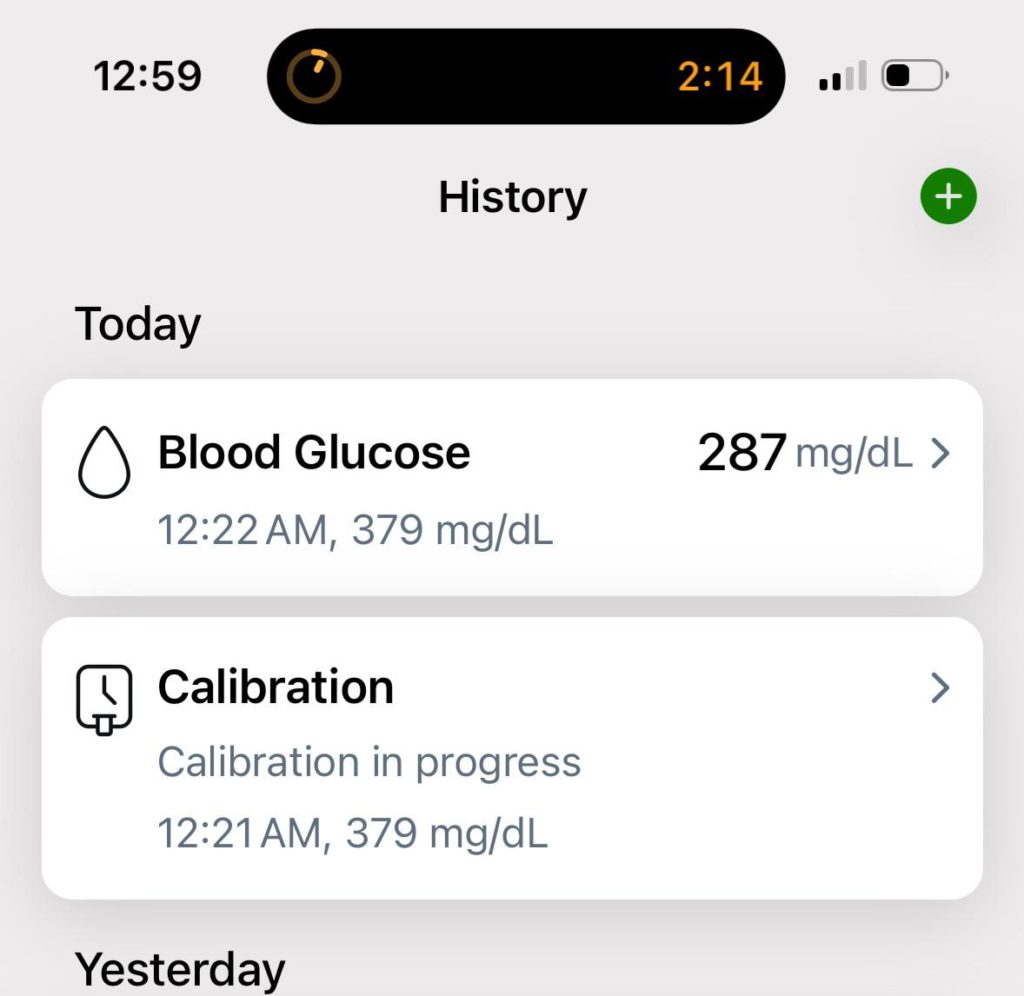
I am obsessive about calibration. I use a Roche Accu-Chek Guide/Instant meter (highly accurate and closely aligned with capillary glucose), which in turn matches my Dexcom sensor calibration.
For calibration samples I: wash hands, dry well, milk not squeeze, discard the first drop, take two tests (a third if they differ by more than 0.5 mmol/L or 10 mg/dL), then average the best pair and use that value to calibrate.
If you are not prepared to be this militant, do not calibrate. You are more likely to make things worse.
Why others avoid optional calibration
- User error (dirty hands, rushed testing, old strips) can make a perfectly good sensor look worse.
- Bad calibration data can drag the CGM away from reality.
- Some people virtually never finger-prick, so optional calibration is irrelevant clutter.
- If you know you will not follow best practice, leave factory calibration alone.
- If optional calibration offers you nothing, the simplicity of Freestyle Libre may be ideal.
Alerts and alarms: informed, not overwhelmed
All CGMs can alert for highs and lows. Some are just more nuanced about it.
Advanced alarm features
- Dexcom G6 / G7 – Urgent Low Soon: predicts if glucose will fall below a set level in ~20 minutes, giving you a head start.
- Dexcom G7 – delayed first high alarm: delays high alerts after meals to avoid “you ate food” alarms, as shown below.

Minimising alarm fatigue
- If alerts drive you mad, Dexcom G7 has very flexible alarm customisation.
- If you want simpler “on/off” style alarms with fewer interruptions, FreeStyle Libre 2 and 3 Plus may suit better.
AI-powered predictive insights
Accu-Chek SmartGuide introduces some unusually powerful forecasting tools:
- 30-minute hypoglycaemia prediction alert.
- Two-hour glucose projection – helpful for driving, meetings, sports, and daily planning.
- Seven-hour overnight hypoglycaemia risk assessment – especially useful for those on injections with bedtime insulin.
- These 2–7 hour predictions have shown >85% accuracy when modelled on large real-world CGM datasets and in-silico simulations (see analysis).
Yes, this modelling was retrospective rather than fully prospective in real time. But it used more than 50,000 patient-days of CGM data – a scale that would be extremely difficult to match in a traditional randomised trial. In this case, big data is a genuine advantage.
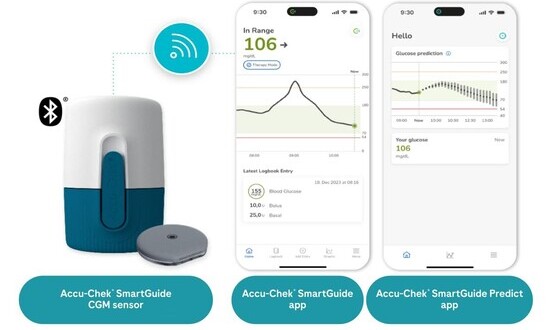
Who might benefit most?
People who:
- Still have ≥ 4% hypoglycaemia despite CGM (<3.9 mmol/L or 70 mg/dL).
- Want a “crystal ball” that looks 30 minutes to 7 hours ahead, not just 10–20 minutes via trend arrows.
- Are on MDI or standard pump therapy and either cannot access or do not want an AID system.
Whether this will succeed in a crowded market will depend on user experience once it launches (expected summer 2025). I plan to try it and report back.
Sensor size and wear duration: comfort matters
Freestyle Libre 3 / 3 Plus is currently the smallest CGM on the market, with a 15-day wear time. If minimal footprint and longer wear are priorities, Libre 3/3 Plus is hard to beat. FreeStyle Libre 2 Plus is also 15-day wear.
Other systems:
- Accu-Chek SmartGuide – 14 days.
- Dexcom G6/G7/One/One+ – 10 days.
- Medtronic Guardian 4 / Simplera – 7 days.
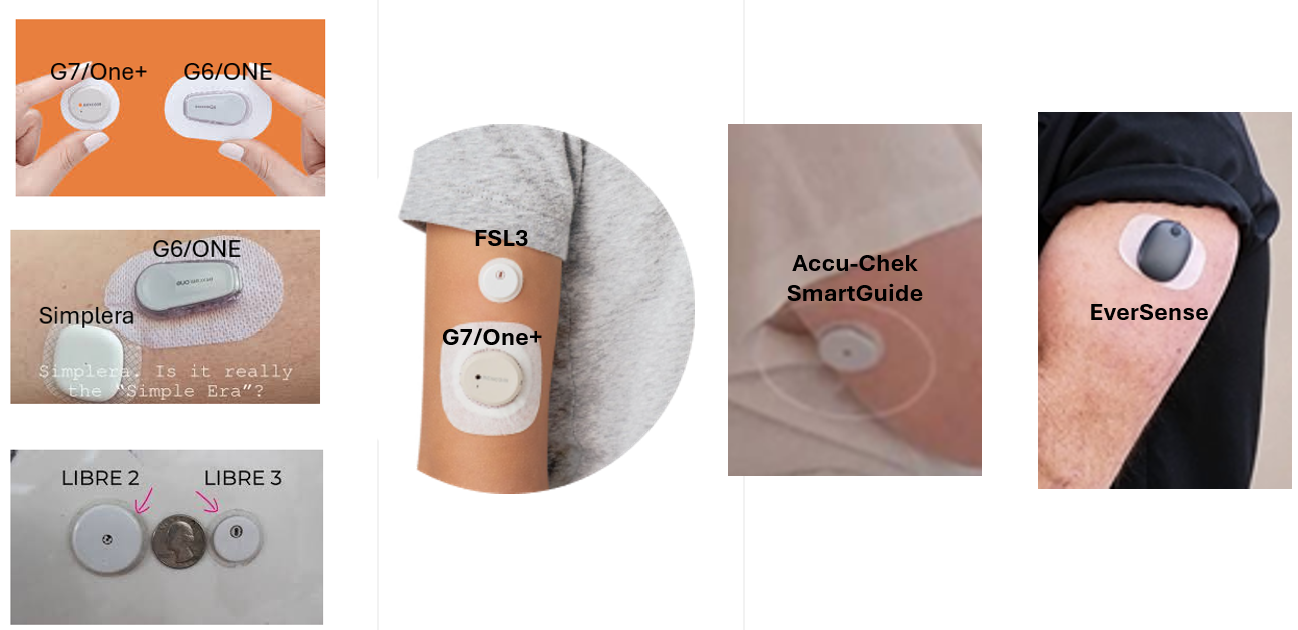
Remote monitoring: keeping others in the loop
Most modern CGM systems allow “followers” – partners, parents, or carers can see your data.
This is particularly useful for:
- Children and young people.
- People with impaired hypo awareness.
- Those who want extra overnight reassurance.
For others, external monitoring may not be wanted at all. From a technical standpoint, there is very little difference between CGMs here – it is more a question of whether you want that feature.
Receiver vs phone app: how do you want to see your data?
Some systems are phone-only. Others offer a dedicated receiver.
- Dexcom G6 / One / G7 / One+: option of a dedicated receiver – useful if you do not want to rely on a phone or do not want your glycaemia piped into the rest of your digital life.
- FreeStyle Libre 2 and 3: optional readers that also work as blood glucose and ketone meters.

AID system connectivity: who talks to what?
If you are considering an Automated Insulin Delivery (AID) system, CGM–pump compatibility is crucial. As of roughly March 2025 (and with some country-to-country variation):
- Dexcom G6: Tandem t:slim, Omnipod 5, CamAPS FX.
- Dexcom G7: t:slim and Omnipod 5 (and growing).
- FreeStyle Libre 2 Plus: Omnipod 5 and t:slim (not yet UK).
- FreeStyle Libre 3 Plus: CamAPS FX.
- Medtronic Guardian 4 / Simplera: Medtronic 780G.
In the UK today, Dexcom G6 probably offers the broadest AID integration. G7 is expanding and in some regions is already the main AID hub. Abbott is catching up rapidly, so this is a moving target.
If you are AID-curious or AID-bound, the AID Systems Guide walks through your main options.
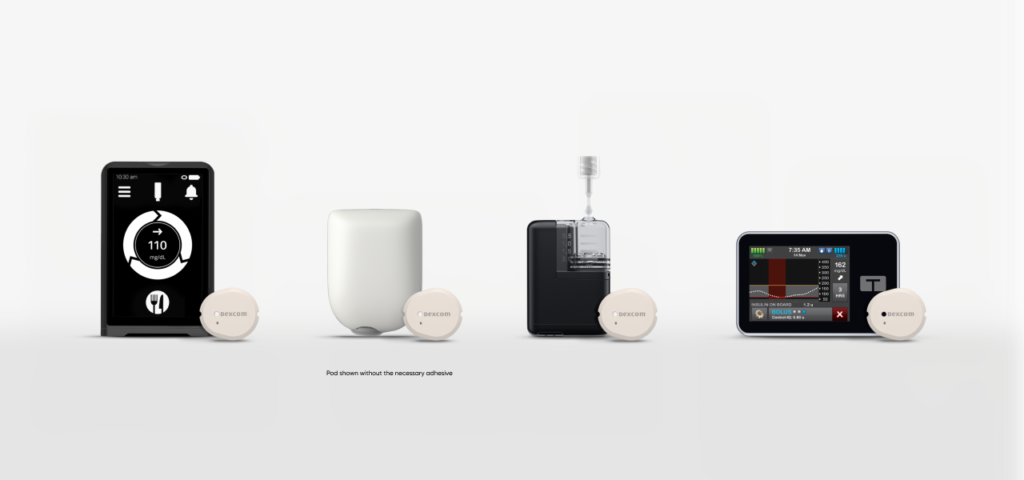
Connectivity with insulin pens and apps
Medtronic Guardian 4 / Simplera integrates with the Smart MDI system and Medtronic’s connected insulin pen, simplifying Multiple Daily Injections for those who like app-based support.
Other CGMs are improving their integration with dosing apps and “smart pen” ecosystems. This area is evolving quickly, and I would defer to colleagues deeply embedded in digital dosing tools for up-to-the-minute detail. One of those is Amy Jolley (Diabetes Dietitian, Salford) – I plan to bring her onto the podcast to explore this properly.
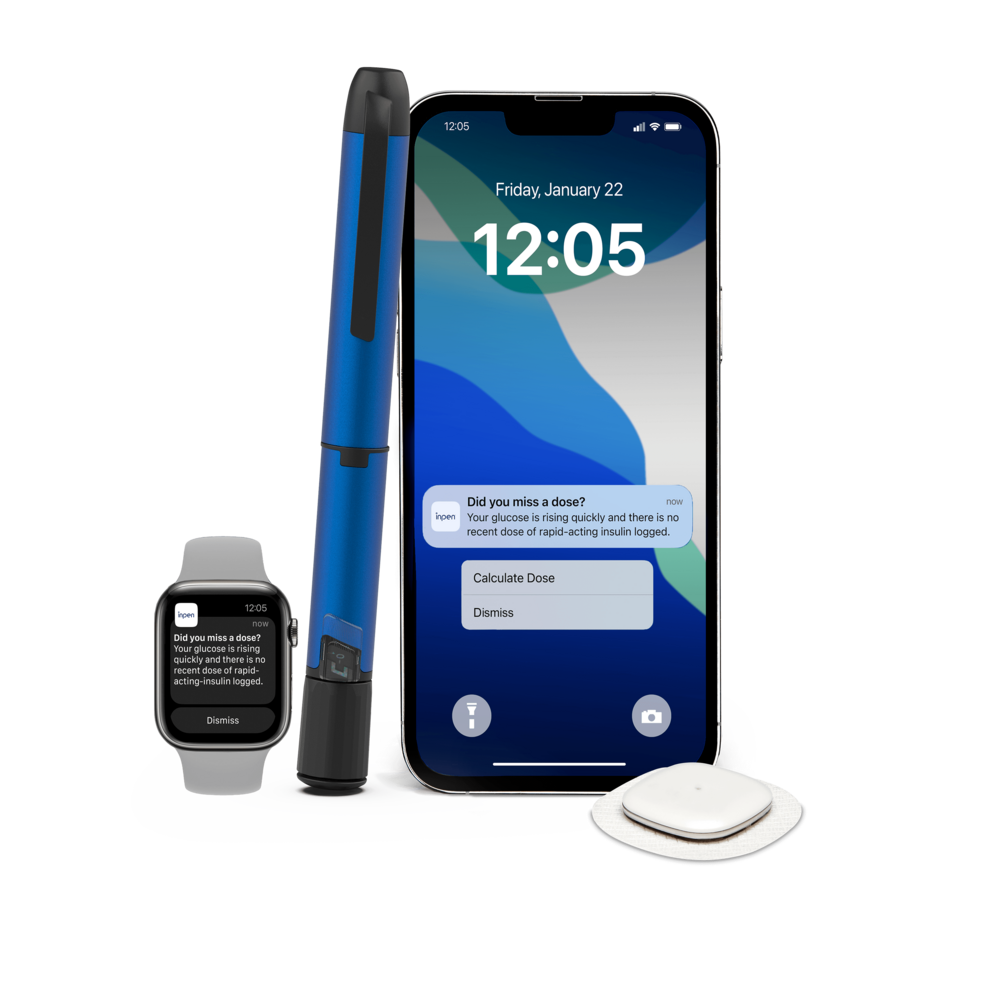
Age
All CGM systems discussed here are licensed for people aged 2 years and older, except:
- Accu-Chek SmartGuide – licensed for 18 years and older (as of April 2025).
Final thoughts: how to choose the right CGM for you
Think of this like choosing a car. Once you have accepted that different engines behave differently (capillary-aligned vs venous-aligned CGM, with different TIR needs), you can choose the features that matter most.
All CGMs covered here:
- Have reasonably robust data behind them.
- Can support good glucose management.
- Will work well if used consistently and understood properly.
The “best” one is the one that fits your physiology, your calibration preferences, your tech tolerance, and your life.
| Priority | Best CGM option (in this landscape) |
|---|---|
| Highest alignment with capillary glucose (tighter match to real exposure) |
Dexcom G6 / One Dexcom G7 / One+ FreeStyle Libre 2 Plus FreeStyle Libre 3 Plus |
| Optional calibration | Any CGM except FreeStyle Libre (no optional calibration) |
| Smallest & longest wear | Smallest: FreeStyle Libre 3 Plus Longest wear (15 days): FreeStyle Libre 2 Plus and Libre 3 Plus |
| Most flexible alarms & predictive alerts | Dexcom G7 |
| AI-driven longer-range predictions | Accu-Chek SmartGuide |
| Strongest AID interoperability (overall) | Dexcom G6 Dexcom G7 (expanding) |
| Integrated smart pen & app (Smart MDI) | Medtronic Guardian 4 / Simplera |
| Standalone receiver (no phone needed) | Dexcom G6 / G7 / One / One+ FreeStyle Libre with reader Not Medtronic-only phone setups |
If this was useful, please share it with anyone choosing a CGM or reviewing their current one.
Next up: 10 tips to master CGM.
John

